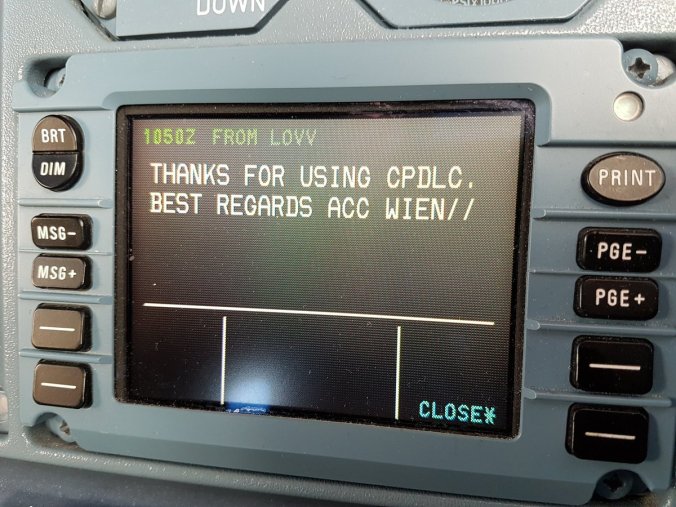Published: May 8 2020
In the US, avionics modifications are usually not mandatory. However, some must be mandatory to improve contemporary flight management and safety systems. These modifications would also be mandatory for any foreign planes traveling to the US. Mostly, such measures improve the current safety standards on congested air-traffic routes over USA.

At present, the whole of the US aviation industry is talking about the ADS-B / CPDLC mandate for 2020. With less than 16 months to the deadline, aviation maintenance companies are starting to feel the pressure. However, these changes were already in motion since 2010
The first-stage implementation of this new datalink system was initiated in South Florida. Aircraft maintenance companies like Boca Aircraft Maintenance, LLC saw the new ground infrastructure being built and tested. Attentive executive aircraft maintenance vendors in Florida already knew that a massive avionics modification change was coming.
ADS-B (Out) will be a mandatory upgrade to your current aircraft communication systems by 2020. In 2016, major airports in Florida like Miami started using CPDLC communications with planes which had already upgraded their avionics.
CPDLC is the acronym for “Controller-Pilot Data Link Communication”. It includes data link technology like a MCDU interface, a VHF radio unit, and the ADS-B (Out) module. This avionics modification is now on the priority list of every executive aircraft maintenance company in the US. However, some aircraft owners are still a bit confused about this new com-link.
Though most of South Florida’s aircraft maintenance companies are repeatedly requesting clients to upgrade; the response is still quite slow.
A single unit takes about 2-3 days to install. Soon, all aviation maintenance engineers and installation technicians will be short of time. Installation of CPDLC / ADS-B units would also become more expensive as the deadline comes closer.
This new automated communication system will make in-flight management much easier. It will have a Satcom datalink, as well as HF radio systems. Also, aviation maintenance technicians will find it easier to install these new systems.
The CPDLC communication format is a bit different from the old Satcom protocols. It communicates via three distinct ‘Contracts’ between the ATC and the pilot –
– The controller sets a timed response according to the intervals needed. The plane’s transponder automatically sends specific data like altitude, flight path, and velocity to the ATC. Previously, pilots had to relay this data verbally on the radio, causing miscalculations and frequent human error.
– The ATC sets several parameters for each plane’s ADS-B unit to respond to. The moment your plane deviates from these parameters; the controller receives text warnings. The Pilot then receives new instructions and rectifications though template text messages.
– The pilot contacts ground control with the MAYDAY protocol. It is primarily for emergency situations. It primarily involves text messages, as well as a MAYDAY broadcast over the VHF radio.
The new unit will also serve as a GPS/WAAP transponder, and automated reporting system. In Europe, the ATNB1 is a similar Satcom system. Private aircraft from as far as Europe and Venezuela are coming to Florida to upgrade their US flight compliance.
Also, there are a lot of expectations from the best aviation maintenance service providers in South Florida. Aircraft maintenance companies like Boca Aircraft Maintenance, LLC are already dealing with increasing numbers of domestic and international clientele.
Sadly, even the best executive aircraft maintenance companies are still convincing their US clients to upgrade. Aircraft owners are hoping for a stay-order on the mandate, or at least a postponed deadline. Unfortunately, that is not happening. The FAA has already taken the final decision, and aviation maintenance providers are facing the time-crunch.
To know more about some of the myths about the ADS-B mandate, read our other blog – “6 Myths About the ADS-B Mandate That We Need to Debunk”

The FAA has carefully planned and executed this mandate. They have been monitoring each stage of the development process. Everything about the CPDLC / ADS-B units – from the design and working features, to its user interface is FAA approved. The CPDLC & ADS-B avionics modification is so far the best planned universal mandate in US aviation history.
The ADS-B module collects data by integration with the primary circuitry of the aircraft. However, aviation maintenance firms also need to check the old electronic circuits for any errors before installation new modules. Some of the executive aircraft maintenance firms may have to install more complex units according to specific client needs.
CPDLC installation requires a very accurate understanding of fine wiring, as well as special equipment like a Laser Wire Etching machine. Only a handful of aviation maintenance crews in the US have this equipment. Depending on your aircraft, and your budget; the generic options are the Inmarsat or the Iridium ADS-B modules.
The central idea of CPDLC is to reduce the need for verbal dialogue between ATCs and Pilots. Foreign accents and disturbed radio channels often cause miscommunication. This is especially true for congested VHF frequencies which planes use when near the ATS.
With the new ‘Automated’ system; the pilot will have little need for active participation. The controller will always automatically know here the plane is.
The pilot can text or use the HF radio in case of emergencies. However, they no longer need to search for the right radio channel or worry about the other aircrafts flying nearby. The automatic ADS-B (Out) system will inform both planes of their proximity.
Most of South Florida’s aircraft maintenance companies are still training their staff to install the CPDLC and ADS-B units. However, executive aircraft maintenance firms like Boca Aircraft Maintenance, LLC have been installing these avionics modifications for a few years now. They can upgrade your plane within a few days at the best prices in the US.